
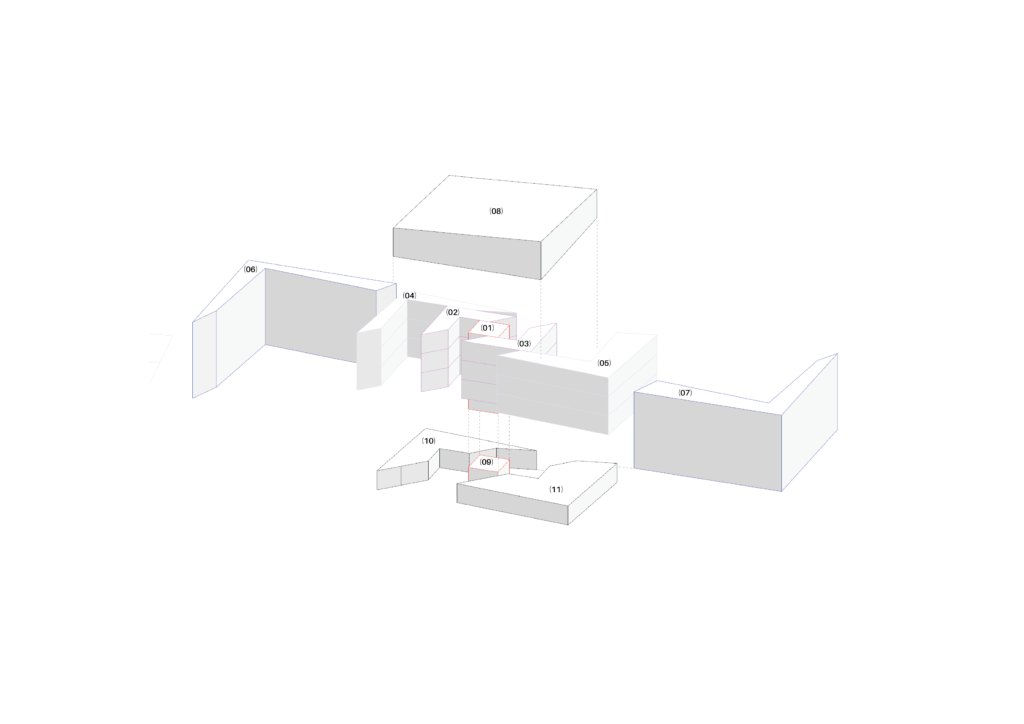
(01) Core *
(02) Sleeping Shelves (N)
(03) Sleeping Shelves (S)
(04) Cluster Shelves (N)
(05) Cluster Shelves (S)
(06) Envelope (N) *
(07) Envelope (S) *
(08) Roof
(09) Core (Ground Floor)
(10) Ground (N)
(11) Ground (S)
* Unconditioned Zones
Core/Bathhouse – Equipment Load : 600 W/m2
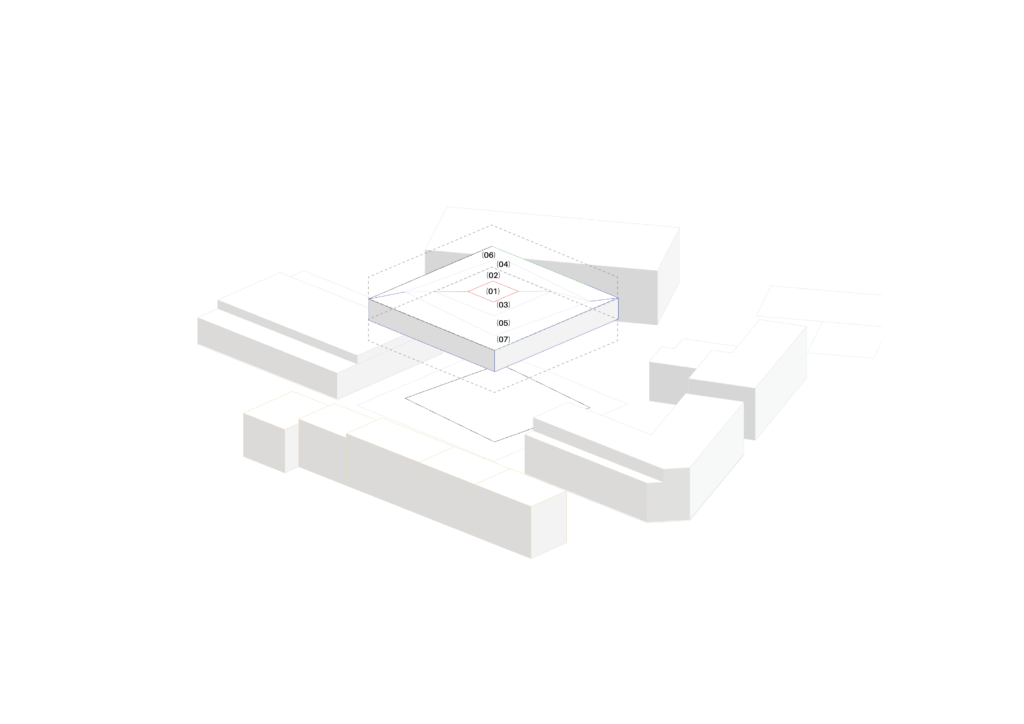
In order to simulate the energy consumption of the layer system, we decided to isolate 1 cluster as a thermal model and obtain relative values. The vertical neighbouring clusters are simplified each as 1 zone.
(01) Core *
(02) Sleeping Shelves (N)
(03) Sleeping Shelves (S)
(04) Cluster Shelves (N)
(05) Cluster Shelves (S)
(06) Envelope (N) *
(07) Envelope (S) *
* Unconditioned Zones
Core/Bathhouse – Equipment Load : 600 W/m2
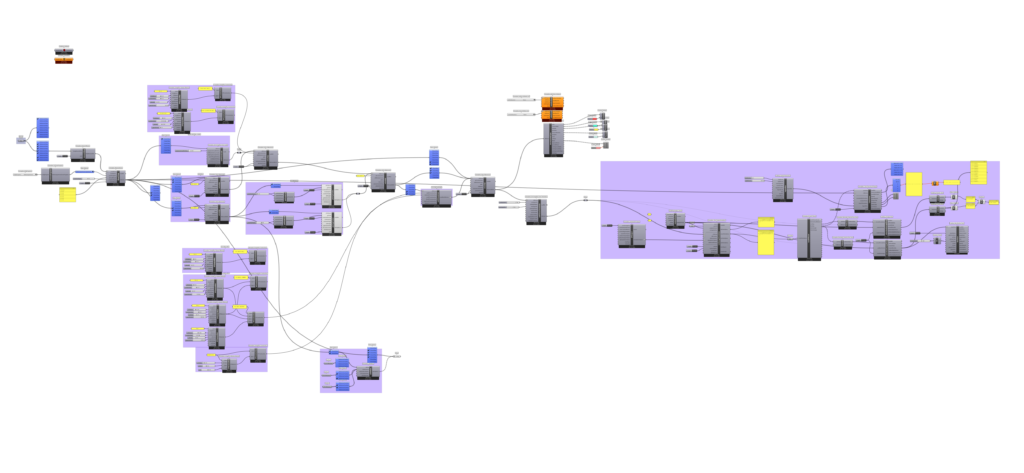

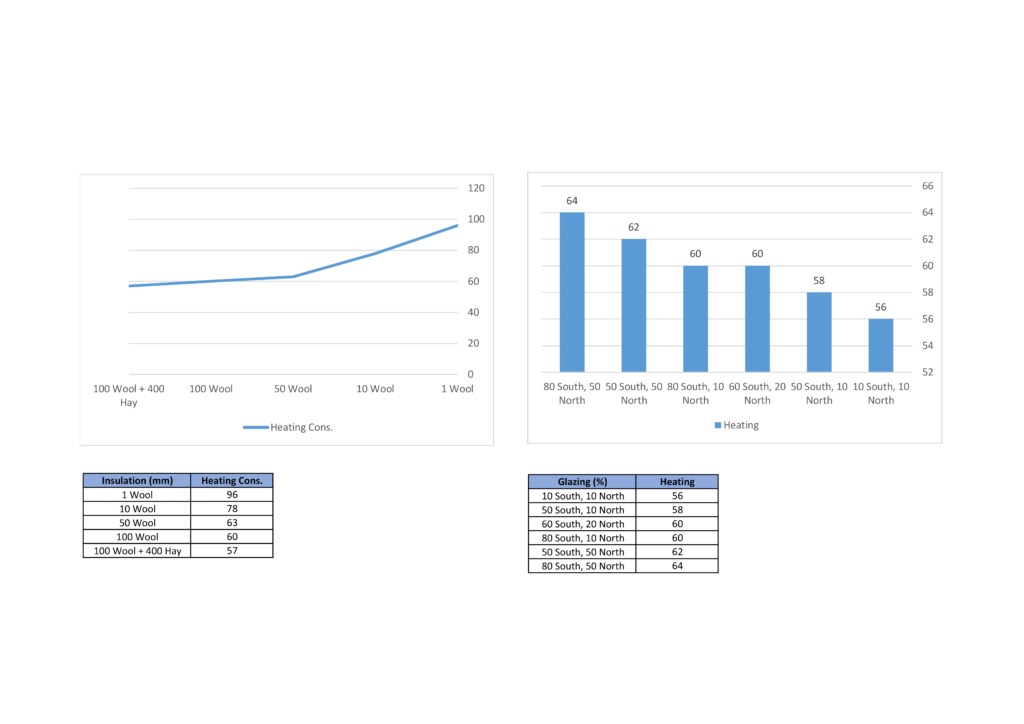
Insulation
The first 5cm of Wool Insulation contribute the most to Energy Savings. Although the curve flattens henceforth, we would still consider adding Hay Bales of 40cm on the opaque facade and parts of the glazed facade during winter.
Constants:
Wood : 4cm
Window Size : 60% S glazing; 20% N glazing
U value of window: 1.53
Glazing
In terms of energy consumption, a scenario without any windows would be ideal.
But considering the Architectural Quality of the space, we would find middle ground of
60% glazing on South & 20% glazing on North
(in Summer).
Constants:
Wood : 4cm
Wool : 10cm
U value of window: 1.53
(Glazing ratio of window could be altered in Winter for further energy savings)
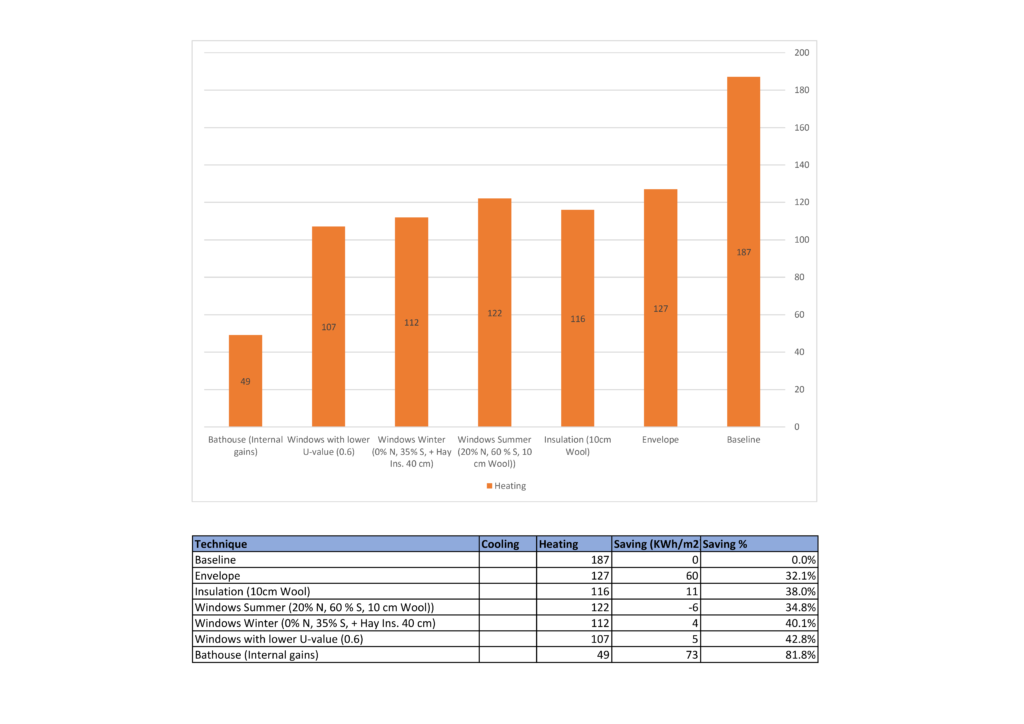
Although the HoneyBee simulation did not account for the reality of our layered design, we could still conclude that the system of the layers contributes to Energy Savings largely.

